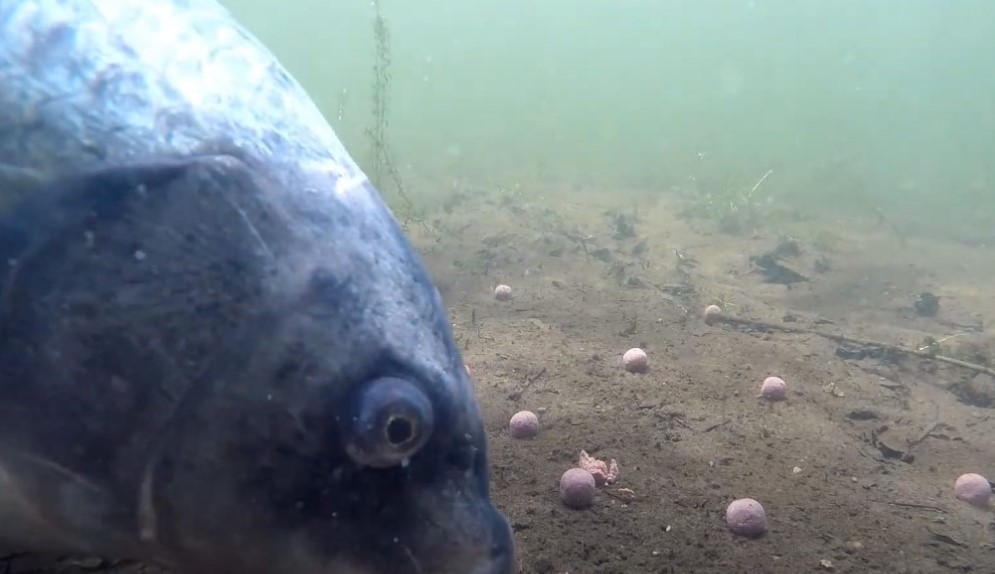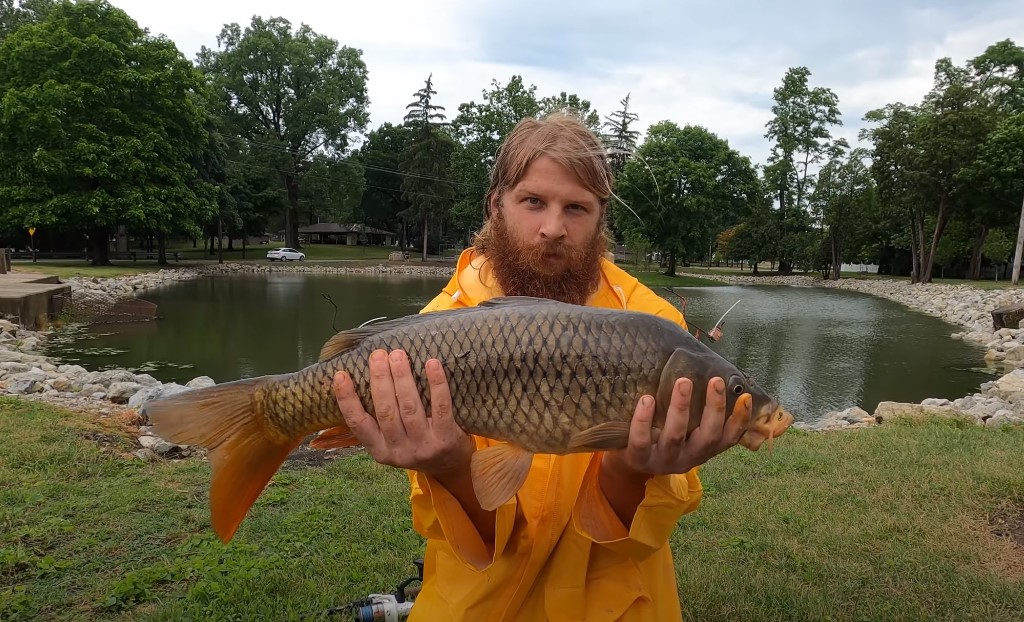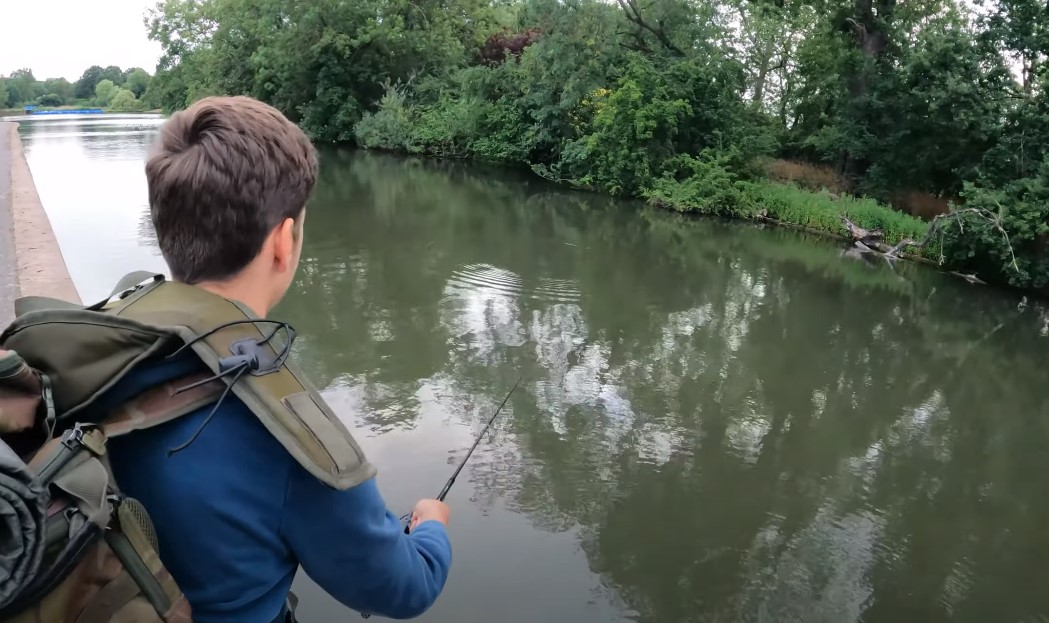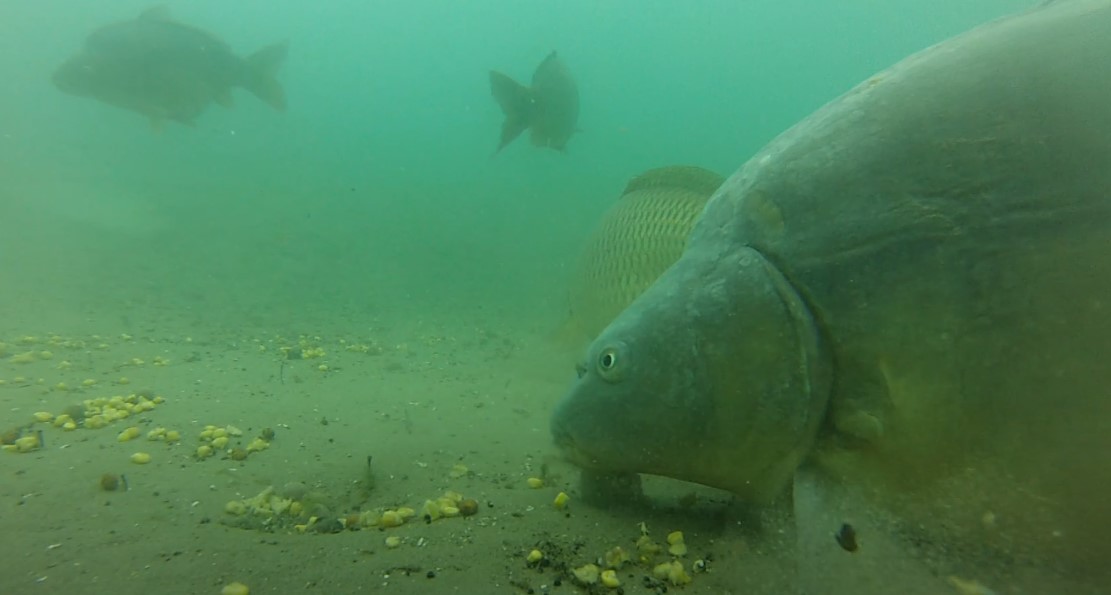So, you’ve heard about ghost carp, and you’re curious. Maybe you’re an angler looking to expand your fishing repertoire or just someone intrigued by the name.
Whatever the reason, let’s talk about the mysterious world of ghost carp. By the end, you’ll know all about their origins, habitats, and, of course, how to catch one.
A Quick Look
| Aspect | Details |
| Origin | Hybrid of common carp and koi carp |
| Preferred Habitat | Still waters, slow-moving rivers, man-made ponds |
| Key Features | Metallic sheen, various colors, large size |
| Fishing Tips | Pre-baiting, using appropriate rigs, patience |
| Best Baits | Sweetcorn, boilies, bread |
| Optimal Times | Early morning, late evening |
Origins of the Ghost Carp
Ghost carp, also known as “koi ghost carp,” are a hybrid species resulting from the crossbreeding of common carp (Cyprinus carpio) and koi carp. They first appeared in the UK in the 1980s when koi carp breeders aimed to create a more resilient fish with a striking appearance.
These hybrids gained popularity due to their hardiness and unique look. Ghost carp often have a metallic sheen, giving them an eerie, ghost-like appearance under the water, hence the name. They quickly became a favorite among anglers and pond enthusiasts alike.
Where Ghost Carp Hangs Out
Ghost carp are versatile and can thrive in various water bodies. They prefer:
- Still Waters: Lakes, ponds, and reservoirs are their usual haunts.
- Slow-Moving Rivers: They can also be found in the calmer sections of rivers.
- Man-Made Ponds: Many people keep them in garden ponds due to their striking looks and hardy nature.
A key factor in their habitat preference is the availability of food. Ghost carp are opportunistic feeders, thriving in waters with a rich supply of natural food sources like insects, crustaceans, and plant material.
Characteristics & What Makes Them Stand Out

Ghost carp possess several distinct features:
- Metallic Sheen: Their scales often have a shiny, metallic quality.
- Color Variations: They can be silver, gold, or a mix, often with dark patches.
- Size: They can grow quite large, with some reaching up to 30 pounds or more.
Their unique appearance not only makes them popular in ornamental ponds but also a prized catch among anglers.
How to Catch Ghost Carp

Now, let’s get to the part you’ve been waiting for. Catching a ghost carp requires a bit of strategy and patience. Here’s a step-by-step guide:
1. Equipment Checklist
- Rod and Reel: A medium to heavy-action rod paired with a robust reel.
- Line: A strong, abrasion-resistant line, around 12-20 lb test.
- Hooks: Size 6-10 hooks work well.
- Bait: Sweetcorn, boilies, and bread are effective. Ghost carp aren’t too picky.
- Landing Net: A large net to handle their size.
2. Location Scouting
Finding the right spot is half the battle. Ghost carp prefer:
- Shallow Margins: They often feed in shallow waters near the edge.
- Weedy Areas: Look for spots with plenty of underwater vegetation.
- Clear Water: They thrive in clear, clean water.
3. Baiting the Area
Pre-baiting can increase your chances significantly. Scatter a handful of bait in your chosen spot for a few days before fishing. This will attract carp to the area and keep them coming back for more.
4. Setting Up
- Rigs: Use a simple hair rig or a feeder rig.
- Bait Presentation: Make sure your bait is presented naturally. Ghost carp are wary and will avoid anything that looks suspicious.
- Patience: Cast your line and wait. Patience is key when fishing for ghost carp.
5. Landing the Catch
Once you’ve hooked a ghost carp, the real fun begins. They put up a strong fight, so:
- Keep the Line Tight: Maintain tension to avoid losing the fish.
- Be Patient: Let the carp tire itself out before attempting to reel it in.
- Use a Net: Carefully use your landing net to bring the fish ashore.
Common Mistakes to Avoid

Even experienced anglers make mistakes. Here are some common pitfalls and how to avoid them:
- Using the Wrong Bait: Ghost carp can be picky. Experiment with different baits if you’re not getting bites.
- Fishing at the Wrong Time: Early morning and late evening are the best times to fish for ghost carp.
- Ignoring Weather Conditions: Ghost carp are more active in warmer weather. Plan your fishing trips accordingly.
Conservation and Ethical Fishing
While catching ghost carp is exciting, it’s important to practice ethical fishing:
- Catch and Release: Whenever possible, release ghost carp back into their habitat to ensure their populations remain healthy.
- Handle with Care: Use wet hands or a wet cloth to handle the fish. This prevents damaging their protective slime coating.
- Proper Gear: Use barbless hooks to make releasing the fish easier and less stressful for them.
Most Important Facts About Ghost Carp
- Artificial Breed: Ghost Carp are an artificially bred variation of the common carp.
- Appearance: They are known for their striking, reticulated appearance, often with a distinctive metallic sheen.
- Intelligence: They are thought to be more intelligent than most larger freshwater fish in Europe, making them a prized catch among fishermen.
- Strength: These fish are known for their strong fighting ability, which adds to their appeal for anglers.
- History: Ghost Koi, another name for Ghost Carp, surfaced in the early 1980s.
- Hybrid Mix: They are a mix of wild carp and single-colored metallic Ogon Koi.
- Popularity: Due to their unique appearance and challenging catch, they have gained popularity among anglers and fish enthusiasts.
- Size: They can grow to be quite large, similar to their common carp relatives.
- Lifespan: Like other Koi, Ghost Carp can have long lifespans, often living several decades.
- Color Patterns: They often have a pale color pattern, especially on their heads, making them easy to identify from above.
- Symbolism: In various cultures, Koi, including Ghost Carp, symbolize good luck, prosperity, and perseverance.
- Adaptability: Ghost Carp are highly adaptable to various freshwater environments.
- Diet: They have a varied diet, including plants, insects, and small aquatic animals.
- Behavior: Ghost Carp exhibit interesting behaviors, such as socializing in groups and displaying territorial tendencies.
Wrapping It Up
Ghost carp are fascinating creatures, both beautiful and challenging to catch. Whether you’re an angler looking for a new adventure or someone who appreciates the beauty of these fish in a pond, there’s something truly special about ghost carp.
Equip yourself with the right gear, find the perfect spot, and, most importantly, enjoy the process. Good luck out there!

